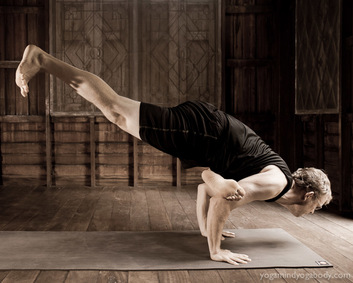|
Most of us have a tendency to work too hard in yoga at least some of the time in an effort to try to force improvement in our practice. However, over-efforting is counterproductive because it increases the likelihood of injury and thwarts our enjoyment of the present moment, which in turn impedes our ability to practice awareness with serenity. In addition, too much power in our practice makes it difficult to explore the refinements of the poses, to notice and adjust minor alignment imbalances, and to find expressiveness, spaciousness, and freedom in each pose. So how do you go about striking that balance between power and refinement? The answer is through the breath. Think of your body as an orchestra, and your breath as the conductor. Each musician—each body part—knows how to play their part, but to create a coordinated, immersive, transformative whole, the individual parts need to be coordinated, synchronized, orchestrated. The breath does this, but it does a whole lot more. Just like a conductor sets the tone of the music, the breath sets the tone of your practice. There are some fundamental rules of good breathing: the breath should always be smooth, steady, and free of strain. But there is also quite a bit of room for individual expression in the breath, and creatively varying the breath is how we can shift the balance between power and refinement in each pose, and at every stage of each pose. We do this by varying both the depth of the breath and its pulsation:
(The principles underlying this week’s theme come from Erich Schiffmann’s excellent book Yoga: The Spirit and Practice of Moving into Stillness.) Originally posted on Gernot's website
0 Comments
Leave a Reply. |
Pranaya Yoga TeamLaurence Gilliot, Gernot Huber, Rosemary Bolivar and Lek Kittikunaudul share their insights and knowledge on Yoga Archives
April 2019
Categories |


 RSS Feed
RSS Feed
